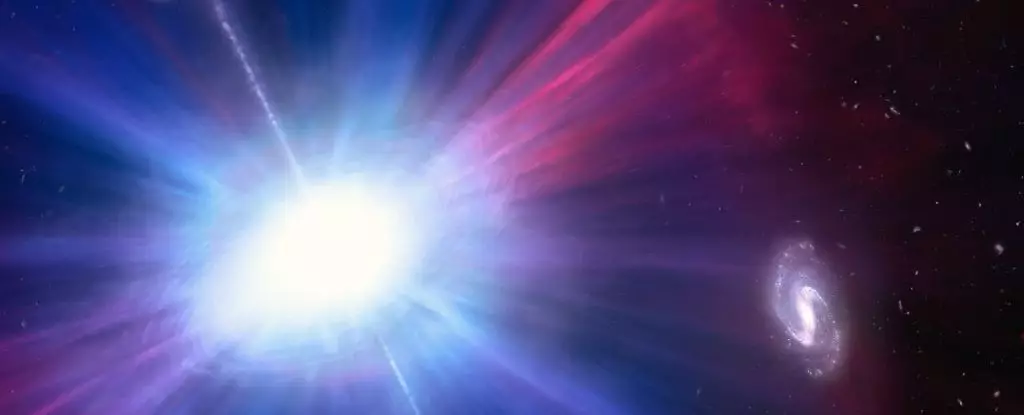In the vast expanse of intergalactic space, a peculiar cosmic explosion has left astronomers baffled. These enigmatic events, known as luminous fast blue optical transients (LFBOTs), have thrown a wrench in our understanding of the universe. The recent sighting of the Finch (AT2023fhn), an LFBOT located at a significant distance from the nearest galaxy, challenges the current hypotheses surrounding these extraordinary phenomena. As astronomer Ashley Chrimes expresses, “The more we learn about LFBOTs, the more they surprise us.” Let us delve into these intriguing cosmic flares and explore the mysteries that lie within.
When the first LFBOT was observed in 2018, scientists were captivated by their distinctive properties. LFBOTs shine with an unparalleled brightness, surpassing that of a regular supernova by at least tenfold. Additionally, these cosmic flares are ephemeral, akin to a fleeting flash in the expanses of space. This brevity, combined with their intense luminosity, lends them a captivating bluish hue. These queer features prompted researchers to consider various explanations for their origins.
Scientists initially contemplated the possibility that LFBOTs arise from a unique breed of core collapse supernovae. In this scenario, the core of a dying star collapses directly into a neutron star or black hole, resulting in a massive explosion. Such an event necessitates the presence of a progenitor star, at least eight times the mass of the Sun. However, this hypothesis encountered a challenge with the discovery of the Finch.
Spotted by the Zwicky Transient Facility in April 2023, the Finch presented a conundrum that defied conventional explanations. This enigmatic LFBOT manifested itself a staggering 2.86 billion light-years away from us. To make matters more perplexing, it was situated in intergalactic space, a mind-boggling 50,000 light-years from the nearest spiral galaxy and 15,000 light-years from its nearest dwarf satellite galaxy. This distant locale throws a wrench into the supernova hypothesis, leaving astronomers scratching their heads for alternative solutions.
A Glimpse into the Dark Nooks of the Universe
Amidst the bewilderment surrounding the Finch, scientists propose an intriguing alternative. Could there be a hidden globular cluster nestled in intergalactic space? These ancient, isolated conglomerations of stars are believed to harbor black holes, including the elusive intermediate mass variety. If a hidden globular cluster exists, its obscured presence could provide an explanation for the enigmatic explosion. Perhaps, we inadvertently observed one of these black holes voraciously devouring matter in its vicinity. This tantalizing prospect adds a new layer of mystery to the unfolding narrative.
Colliding Neutron Stars and Magnetar Amplification
Another hypothetical explanation for the Finch’s spectacular showcase lies in the possibility of a collision between two neutron stars, one of which might have been a magnetar. A magnetar possesses an intense magnetic field capable of amplifying the resulting kilonova from the collision. While this theory remains unconfirmed, further theoretical analysis will shed light on its plausibility. As Chrimes wisely asserts, “The discovery poses many more questions than it answers.”
Unraveling the Enigma
In the face of mounting uncertainties, one fact remains indisputable: the more LFBOTs we discover, the stranger they become. Each new sighting pushes the boundaries of our understanding of the universe, urging scientists to reevaluate their assumptions and venture into uncharted territories. Whether these bewildering phenomena ultimately stem from unforeseen supernova events, interactions within hidden globular clusters, or cataclysmic encounters between neutron stars, their existence serves as a reminder of the infinite wonders that continue to elude our comprehension.
As we gaze into the night sky, pondering the mysteries of the cosmos, the Finch and its spectral brethren beckon us to delve further into the intricacies of these luminous fast blue optical transients. Through continued research, we inch closer to unraveling their enigma and grasping the inner workings of the cosmic theatricality that unfolds before our eyes.


Leave a Reply